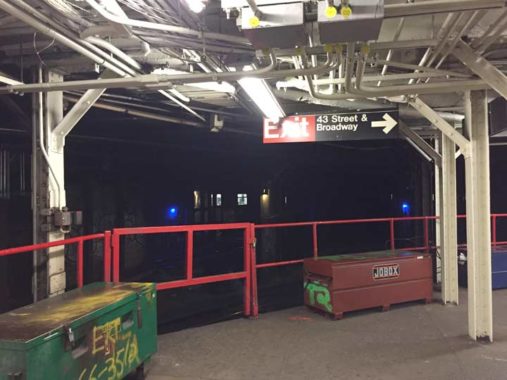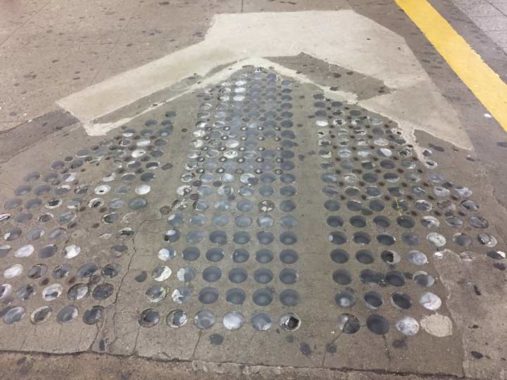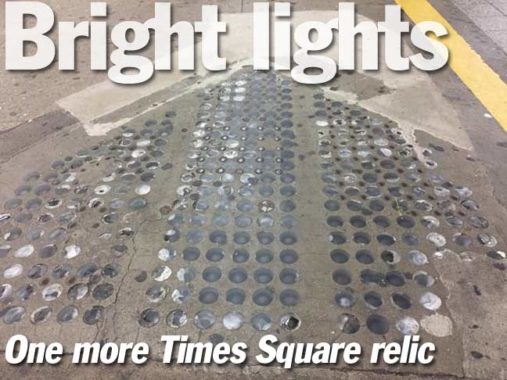Of all of New York City’s hundreds of subway stations, the Times Square Shuttle station is the one I’ve always found the most fascinating. The original IRT subway constructed from 1900-1904 was basically S or Z-shaped and ran from City Hall north on Elm (later Lafayette), 4th Avenue, Park Avenue, then west on 42nd and north again on Broadway to a terminus at 145th Street. Of course more stations and lines were built in short order from 1905-1908.
When a second impetus of building subways and elevated lines began as part of the Dual Contracts funding the IRT and BMT in the early 1910s, that “S/Z” became an H as the original IRT was run up to the Bronx via Lexington and then south to Brooklyn along 7th Avenue and Varick Street. This caused big changes at the original Times Square station, which became orphaned as a result of those uptown and downtown expansions. It became a shuttle train running between Times Square and Grand Central, with transfers to nearly a dozen other subway lines. At first these transfers were not free: they only became so after the subways were unified in 1940, with the true interconnectedness with free transfers not achieved until the late 1940s.
I worked an overnight job for the first time in over 25 years in the spring of 2018. Occasionally, I’d make my way through the Times Square Shuttle station in the early morning after work to check on its many oddities.

Today, the Shuttle is still connected to the Lexington Avenue line (#4, 5, 6) via Track One, and to the Broadway/7th Avenue line (#1, 2, 3) via Track 4, with the connection shown above. The connection is unobstructed at Grand Central, but at Times Square, a metal platform covers the active track to allow passengers to go to the Track 4 platform or exit on 43rd Street. If a connection needs to be made, the platform can be moved in a painstaking process. NYC Subway has some photographs of MTA personnel moving the platform on its shuttle page.

You can still see skylights in the Track One platform. There is a long-closed staircase and pedestrian passageway beneath the tracks that enabled passengers to get from Track 1 to Track 4. This connection was shuttered long ago. While it was electrically lit, these skylights also allowed ambient light to enter the passageway. Today, that platform crossing Track 4 is the only way for passengers to move across the Shuttle platforms.
You can still see skylights that look like this downtown in Tribeca. They allowed sunlight into the basements of some of the buildings. The skylights were made from a variety of tempered glass that in some cases has turned a purplish color from its production using the chemical element manganese.
There is no Track 2 at the Times Square Shuttle platform, or rather, not any more. As part of the station renovations that transformed the station into a shuttle, Track 2 was converted into a platform. This is obvious from the columns with diagonal struts that hold up the tunnel roofs — these are rarely seen on revenue platforms, where they usually have a more columnar design on older IRT and BMT stations. You can also see these columns on the passageway at GCT.
I’ve photographed the Knickerbocker doorway often at the east end of the Track 1 platform often. This was a direct connection from the old Knickerbocker Hotel to what was, when the platform was opened in 1904, the Times Square subway station. I doubt the operators of the hotel had enough pull to allow patrons direct access to the platform without purchasing a ticket for a nickel (turnstiles were introduced in the 1910s) so, the door must have been locked for the most part. In the summer of 2014, the New York Times did an excellent story on this mysterious passageway’s lore and legend, including a coveted glimpse of what’s behind the door.
Speaking of the Times, there’s another old doorway on the shuttle platform that gets quite a bit less publicity. Walk to the other end of the platform from the Knickerbocker door and look toward the ceiling, where you will see the faint outline of an archway.
This door led directly to the New York Times Tower (the one now covered in billboards and ringed by the famous “zipper”). The New York Times’ press room was directly below the station and the newspaper noted in 1905 that “it is possible in the early morning hours to load the successive editions on subway cars for the most rapid general distribution” although the paper would remain in the Times Tower for only 8 years.
Soon after, the entrance was bricked up, although the remains of an archway above the door are still evident.
Source: “Crossroads of the Whirl,”David Dunlap, NY Times March 28, 2004
Check out the ForgottenBook, take a look at the gift shop, and as always, “comment…as you see fit.”
4/2/19
